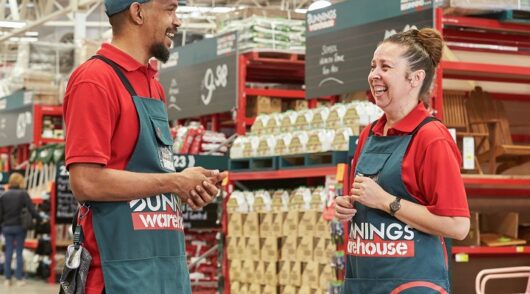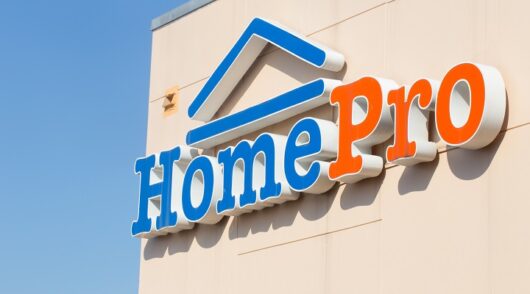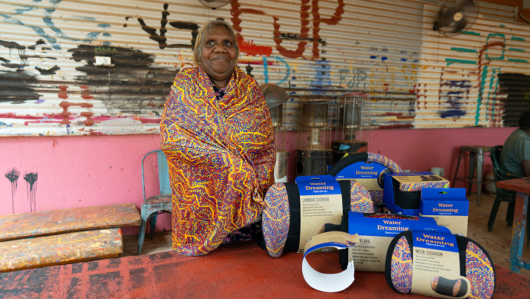 Last month, Bunnings Warehouse updated shareholders on the progress it has made towards launching its highly anticipated e-commerce site.
Last month, Bunnings Warehouse updated shareholders on the progress it has made towards launching its highly anticipated e-commerce site.
On the call, the Wesfarmers-owned retailer revealed that it had started selling most items in its Craigieburn store in Melbourne online, and that it was trialling a click-and-collect fulfilment offer.
Since then, Bunnings has turned on online shopping and click-and-collect across all seven of its stores in Tasmania. It is just the beginning of its plan to “progressively” roll out e-commerce for tens of thousands of SKUs in Australia and New Zealand over the next 18 months.
This marks the most significant step forward since the retailer brought 20,000 online-only products in February 2018. But despite the fact that Bunnings is perhaps the last major retailer in the country to launch online, there is no sense of urgency to pick up the pace from managing director Michael Schneider.
“We want to rush slowly into this,” he told IRW. “There’s no hard date or obligation [to be online].”
One reason for this may be that Bunnings doesn’t have its sights set on being a leading e-commerce company, its significant resources and market share notwithstanding.
“We just want to be a great place customers choose to shop at, and we recognise that customers have more choice than every before, but selling online is just one string in a bow,” Schneider said.
“Our policy of lowest prices, having the largest and deepest range, backing it up with an amazing team of people who provide outstanding service and investing heavily in community and the store experience is all part of it.
“Lots of businesses will talk about being the biggest or best or smartest or fastest. We want to stick to our knitting, which is being chosen for what we do: great products at incredible value.”
This may be why Bunnings has placed such a strong focus on click-and-collect from the start. According to Schneider, the majority of shoppers who bought something online from the hardware giant over the past year chose to pick it up in-store, rather than have it delivered to their home.
Schneider believes this is due to the retailer’s investment in its store experience.
“We invest heavily in having a fantastic store experience,” he said, citing the retailer’s in-store classes, sausage sizzles and staff knowledge as being some of the major draws.
“Whatever product the customer is purchasing, we know they’re going to want to come in and talk with our team, who have a lot of knowledge with DIY projects,” he said.
Schneider said Bunnings has been surveying customers to find out information, such as where they want to collect products in-store, and how long they are willing to wait from the time they order to the time they pick up their items.
At the Craigieburn store, for instance, the click-and-collect counter is next to the service desk in the front of the store, and orders that are placed before 4pm are available for pick-up by 9am the next day. But this may not be the case in every store.
“Because we’ve got different stores, we’ve got a number of different test tubes. We haven’t fixed ourselves on a model; we’re listening to what customers are asking for and working hard to provide in a way that makes sense,” Schneider said.
Avoiding out-of-stock scenarios
According to Schneider, Bunnings currently plans to fulfil online orders from in-store inventory. With tens of thousands of SKUs ranging from packets of screws to garden sheds, the challenge will be in maintaining accurate inventory information and managing stock levels.
Even with real-time inventory, which Bunnings doesn’t have – Schneider said the stores do stock counts each week – it can be difficult to know exactly what items are in stock at any given moment, explained Jonathan Reeve, an authority on last-mile delivery and fulfilment and the general manager for ANZ at Eagle Eye.
“Let’s say a customer goes online at 5pm and orders a 10-watt halogen bulb. It could well be that the store has got 30 packs, so it accepts the order, but in an hour’s time, someone building a new house can go in the store and completely empty the shelves of 10-watt halogen bulbs.
“When you have fast-moving sale lines, it’s very hard to keep on track,” Reeve told IRW.
Reading between the lines, it seems likely that Bunnings will do a staged rollout of its e-commerce offering to different parts of Australia and New Zealand. This will allow the retailer to work out the kinks in smaller markets, such as Tasmania, and improve its offering with each new launch.
Reeve believes this will be crucial in giving it time to develop and adjust its algorithms to get its inventory buffer right, since this can vary widely depending on the product and store.
“The reality is, having done this myself a number of times, it will take them a number of months, if not years, to get it exactly right,” he said.





